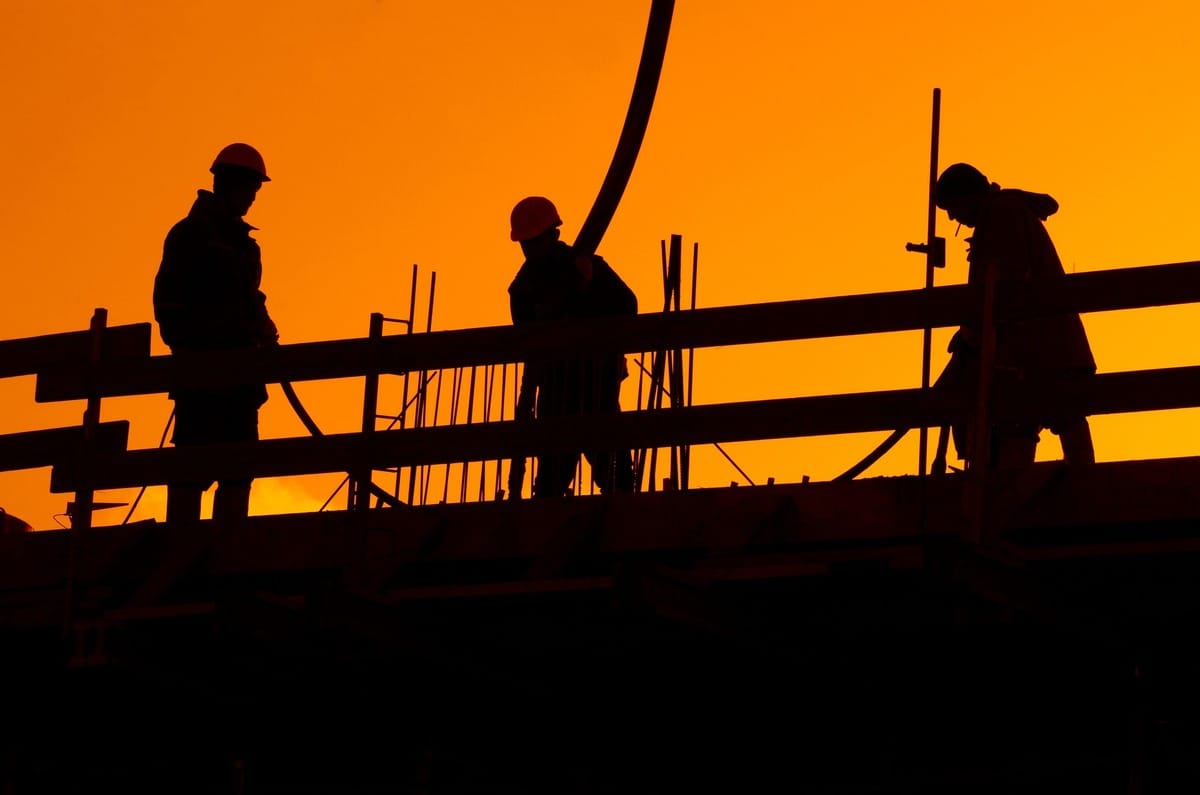- Full Brim Safety
- Posts
- Fall Protection Friday: Guardrails vs. PFAS on Scaffolds - Your Primary Protection
Fall Protection Friday: Guardrails vs. PFAS on Scaffolds - Your Primary Protection
Full Brim Safety: Build Smart, Build Safe

Fall Protection Friday: Guardrails vs. PFAS on Scaffolds - Your Primary Protection
This Weeks Toolbox Talk Attached Below!
Welcome back, let's Build Smart & Build Safe! This week, we've elevated our understanding of scaffolding safety, from its components and erection to daily inspection and safe work practices. Today, on Fall Protection Friday, we're honing in on the most critical aspect: fall protection on scaffolds, specifically the interplay between guardrails and Personal Fall Arrest Systems (PFAS).
When working at height, preventing falls is paramount. The Hierarchy of Controls, which we've covered, guides us to prioritize the most effective methods. For scaffolding, this often means engineering controls are your first and best line of defense.
Guardrails: Your Primary Engineering Control
The Gold Standard: Guardrails (consisting of a top-rail, mid-rail, and toe board) are the preferred method of fall protection on scaffolds. They act as an engineering control, creating a physical barrier that prevents a fall from occurring in the first place. This is always preferable to arresting a fall after it has begun.
When Required: OSHA generally requires guardrails on all open sides and ends of scaffold platforms that are 10 feet or more above a lower level. However, this height can vary based on your state or company policies and may be lower.
Proper Installation: Top-rails must be 42 inches high +/- 3 inches. Mid-rails are installed approximately halfway between the top-rail and the platform. Toe boards, at least 3.5 inches high, prevent tools and materials from falling. All components must be strong enough to withstand the forces they might encounter.
When is a Personal Fall Arrest System (PFAS) Also Needed?
While guardrails are primary, there are specific situations on scaffolds where a PFAS (full-body harness, lanyard, and anchor point) is required in addition to or in place of guardrails. These situations usually arise when the guardrail system cannot provide complete protection:
During Erection and Dismantling: Workers are often exposed to fall hazards before guardrails are fully installed or after they have been removed. During these phases, workers must use a PFAS if exposed to a fall of 10 feet or more to a lower level.
Specific Task Requirements: Certain tasks might require temporary removal of a section of guardrail. In such cases, a PFAS must be used by workers exposed to the fall hazard.
Working on Suspended Scaffolds: All workers on suspended scaffolds are required to be protected by both guardrails and a PFAS.
Where Guardrails are Impractical: In some very specific situations where it's truly infeasible to install guardrails, a PFAS may be used as the primary fall protection, but this should be a last resort and carefully assessed by a Competent Person.
Training and Competence Remain Key:
Regardless of the fall protection method used, training is non-negotiable. All workers must be trained by a Competent Person on:
The nature of fall hazards on scaffolds.
The correct procedures for erecting, disassembling, moving, operating, repairing, maintaining, or inspecting the type of scaffold in use.
The proper use, care, and inspection of all fall protection equipment (PFAS).
The maximum intended load-carrying capacities of the scaffold.
Prioritize prevention with guardrails, and always use your PFAS when the situation demands it. Understanding when and how to apply these layers of protection is crucial for ensuring everyone working on scaffolding goes home safe.
Download Your Toolbox Talk Here!
Don't forget to sign your friends up for Full Brim Safety for your daily dose of construction safety tips!
-The Safety Man

